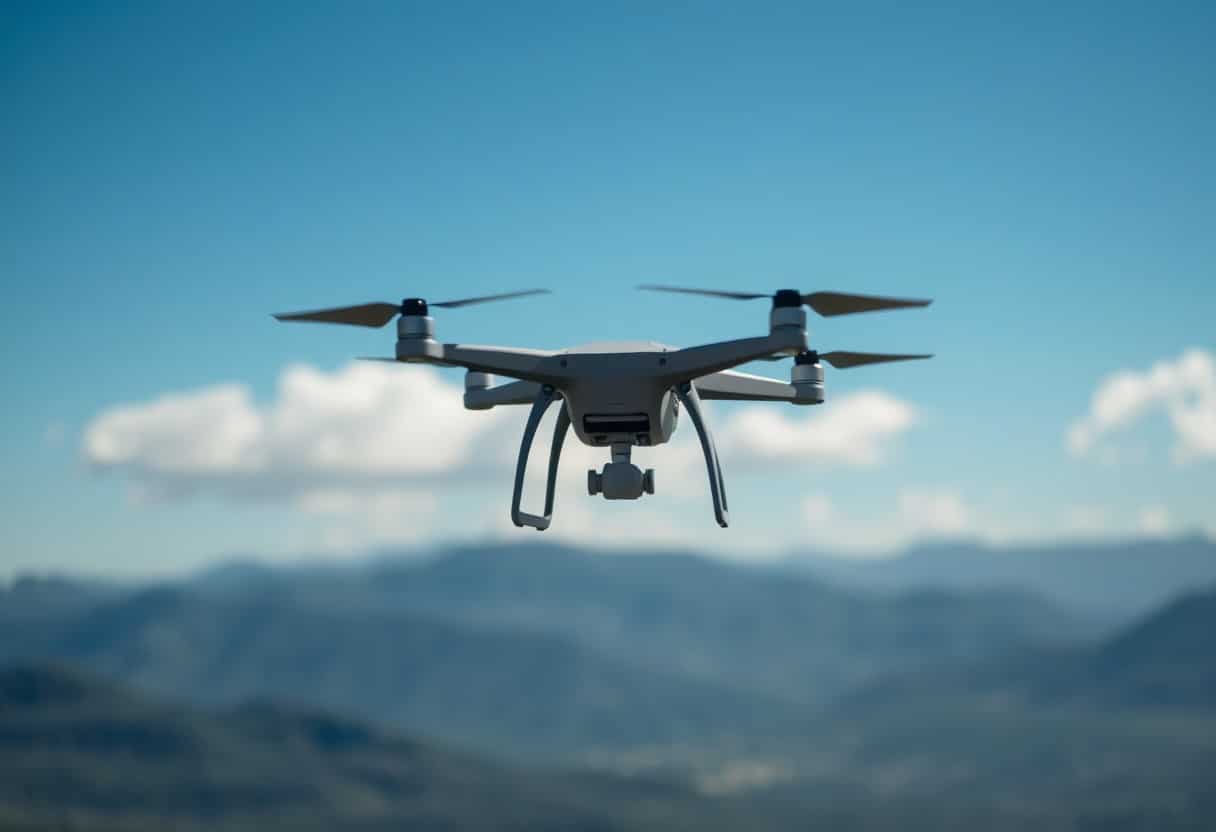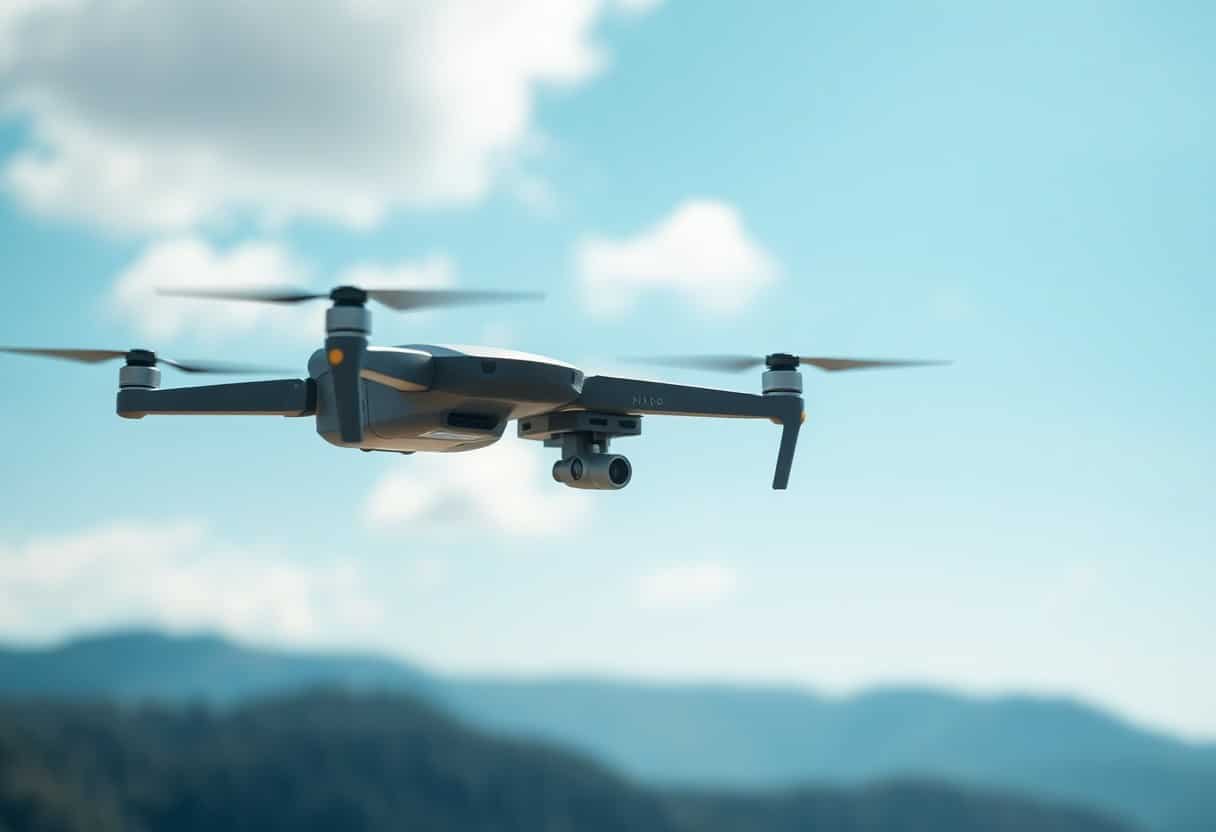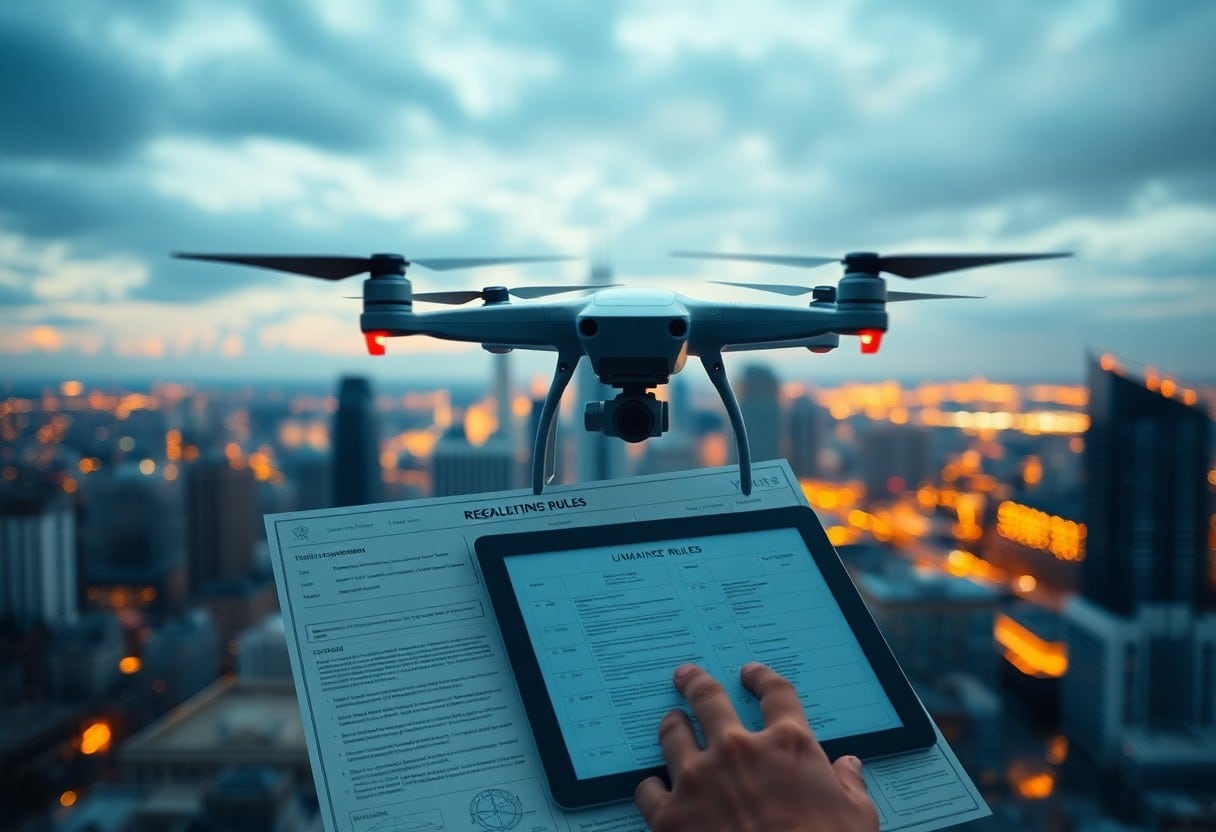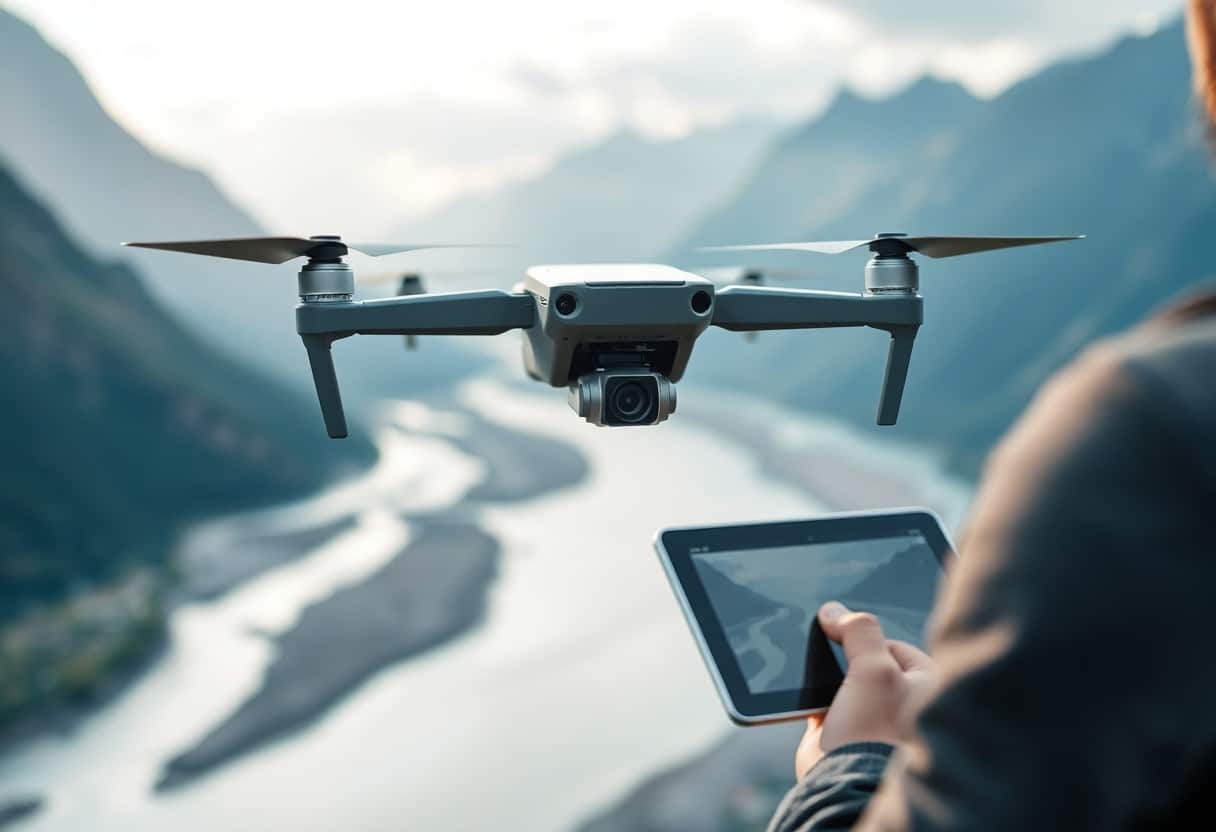What weather precautions should you keep in mind for effective aerial photography?
Understanding the weather is crucial when it comes to effective aerial photography. You need to pay special attention towind speed,cloudinessrespond in singingprobability of precipitationAll of these things can affect the effectiveness and safety of your photography. High winds can cause your aerial camera to go haywire, while excessive cloud cover can affect the light and may even turn your enthusiasm into disappointment. So check the weather forecast in advance and plan for the best time to make sure your aerial shoot goes smoothly.

Key Points:
- light: Choosing the best time to shoot, such as the golden hour, can effectively improve the quality of your images.
- wind speed: Be aware of the wind speed, strong winds can affect the stability of the drone and make it difficult to shoot.
- Clouds: Low clouds or cloudy skies may cause underexposure of the shot and affect the picture.
- precipitation (meteorology): Avoid shooting in rainy or humid weather to protect your equipment and ensure picture quality.
- Temperature: Extremely high or low temperatures may affect battery performance, check the status of the device in advance.
- Visibility: Ensure that the visibility of the shooting location is clear, haze and smoke will affect the shooting results.
- Weather Forecast: Check the weather forecasts in advance and plan your shooting schedule to avoid unfavorable conditions.
Understanding Climate Conditions
When shooting aerial photography, it is important to understand the climatic conditions in your environment. Climatic conditions can directly affect the quality of your photography and the safety of your equipment. In particularwind speed,Cloud Coverrespond in singingVisibilityThese three factors will have a significant impact on the outcome of your photo shoot. Therefore, you need to carefully evaluate these conditions before planning your shoot.
Wind Speed and Direction
Wind speed and direction is one of the most important factors affecting aerial photography. Highwind speedIt may cause your drone to go out of control or even crash, endangering your equipment and surroundings. Before operating and filming, make sure you check the currentwind speedand the forecastedthe way the wind is blowingIn order to choose the best time and place for the photo shoot.
Cloud Cover and Visibility
Cloud cover and visibility have a direct impact on your shooting schedule. Excessive cloud cover reduces light and affects the clarity and color of your images. Therefore, you should keep an eye onChanges in cloud coverTo ensure that no photographs are taken when the cloud level is too low or the visibility is poor.
The thickness and distribution of clouds affects the quality of light you get, especially at sunrise and sunset. WhenThinner cloudsYou can enjoy soft natural light to enhance the beauty of your subject; andExcessive cloud coverThis will result in too dark a picture. It is recommended that you select thesunny dayor when the cloud level is moderate for the best image results and clarity.
Effect of Temperature on Aerial Photography
When shooting from the air, temperature has a profound effect on your equipment and the results you get. Different temperatures can affect your drone's battery life, flight stability and image quality. Here are some temperature factors you need to be aware of:
| Temperature Range | Impact |
|---|---|
| Below 0°C | Dramatic drop in battery performance, reduced drone flight time |
| 0°C to 20°C | Optimal flight conditions, good battery stability |
| Above 20°C | The effect of overheating on the device may need to be considered |
Cold Weather Considerations
In cold weather, you should pay special attention to your drone's batteries. Cold temperatures may cause the batteries to discharge quickly, resulting in shorter flight times. Make sure you keep your batteries warm before flying, and consider carrying a spare battery for emergencies.
Warm weather effects
A warm environment is favorable for drone flight and image tracking, but if the temperature is too high, it may cause the equipment to overheat. In this case, you need to closely monitor the temperature of the drone and should avoid flying at extremely high temperatures to prevent equipment damage.
existHigh temperature environmentWhen flying in the middle of a flight, you should increase your observation of the drone to make sure it doesn't overheat.High TemperatureFlying under the sun will cause the battery performance to deteriorate, which will affect the flight stability and elevation angle. When shooting, it is best to choose the morning or dusk hours to avoid the heat of midday and to get the best image results. At the same time, make sure your image storage media can withstand such working conditions to avoid the risk of data loss.
Precipitation and its effects
You need to pay close attention to precipitation when taking aerial photographs. Rain and snow can not only damage your equipment, but also affect the quality of your shots. If you need to know more about this, please refer to10 Steps to Mastering the Rules for Commercial Use of DronesThe
Rain and Snow Considerations
Rain and snow can have a serious impact on your photography.Rain may blur the lens.but (not)Snow affects visibility and stabilityIn this case, it is best to consider postponing the shoot. In this case, it is best to consider postponing the shoot.
Humidity and its effects
Humidity can have a significant impact on your aerial photography activities. High humidity can cause condensation on your lens, which not only affects your results, but can also cause potential damage to your equipment.
When the humidity is too high, your device may experienceFog and vapor nuisanceThis not only affects the picture quality, but also makes your drone operate less efficiently. In addition, high humidity can causeBattery performance degradationIf you do not have a camera, it will affect the flight time and the results of the shoot. Make sure you shoot on low humidity days or use waterproof equipment if necessary to minimize these risks.

Time and light conditions
When performing an aerial shot, theTime and light conditionsIt has a significant impact on the quality of the image. You should take into account the changes in light at different times of day, such as early morning and late evening natural light. These times of day provide the best conditions for shooting, making your images more vibrant and layered.
Benefits of the Golden Hour
so-calledGolden HourThe short period of time after sunrise and before sunset, when the light is soft and warm, can make your photos full of emotion and atmosphere. Shooting at this time, you can get charming colors and soft shadows, enhance your image expression.
Managing Shadows and Highlights
In the air shot.Managing Shadows and HighlightsIt's important. Strong light creates significant shadows that may obscure some of the details in the image. You need to choose the right angle and height to avoid overly bright areas and to ensure that details in the image are clearly visible.
To effectively manage shadows and highlights, it's important to choose the right time of day and location for the shot. UtilizingCloudsTo soften direct light sources, you can minimize overly strong shadows and highlights. You can also adjust the camera's recommended exposure settings to get the desired effect. In addition, trying different shooting angles will give you the ideal light distribution for a natural, layered image. Remember to check the results after you take a picture so you can make adjustments the next time you take a picture.
Weather Forecasting Tools for Aerial Photographers
For effective aerial photography, it's important to use the right weather forecasting tools. You can refer to resources such asWhat aerial composition tips make your drone photography stand out?These tools not only help you plan your shooting trip, but also predict weather changes that may affect your shoot.
Applications and Technology
With advances in technology, you can utilize a variety of applications to get real-time weather updates and radar images. These tools keep you up to date on wind speeds, cloud heights, and other meteorological conditions that affect flight safety, helping you plan the best time to shoot.
Interpreting Weather Charts
Understanding weather maps can help you predict upcoming weather changes. You need to focus onHigh Pressurerespond in singingLow Pressure Areadistribution, which affects wind speed and cloud cover. It is also important to look forthunderstormrespond in singingblizzardThis represents a significant risk to the shoot. Interpreting this information will help you make safe and informed filming decisions.
When you are interpreting the weather map, note that thecold frontrespond in singingwarm frontThe movement of a cold front is usually accompanied by a cold front, which has an impact on the weather. Cold fronts are usually accompanied bySudden rainfallrespond in singingStrong windA warm front may bring more stable weather. You can also predict whether the weather will improve or deteriorate based on pressure changes. Make sure you pay close attention to every detail on the charts so you can adjust your shooting plans in time to stay safe.

Prepare for unpredictable weather
The weather can be unpredictable when it comes to aerial photography, so you need to be prepared. Be aware of the weather forecasts and stay on top of climate changes to ensure you're shooting in the best possible conditions. Consider checking out some professional resources, such asStep by Step - The 6 Best Techniques for Drone 3D ModelingFor more information, please visit the website of the Hong Kong Institute of Certified Public Accountants.
BACKUP PLAN
Before aerial photography, you should make a backup plan to cope with unexpected weather changes. Prepare alternative shooting locations and times, and consider the use of different techniques and equipment, so that in the face of unexpected circumstances, you can respond flexibly to ensure the completion of the shooting task.
Equipment Considerations
Choosing the right equipment is crucial to withstand inclement weather. You should consider using waterproof and dustproof equipment to protect your shooting equipment from damage. In adverse weather conditionsStabilizerrespond in singingHigh Performance BatteryIt helps you maintain shooting stability and extends battery life.
When selecting a device, theEffect on wind speed and temperatureIt is important to understand how these factors affect your shooting. Choose a drone with greater wind stability to keep your shots steady as wind speeds increase. Additionally, considering the current weather conditions, it may be necessary to have a spare battery to ensure that your equipment can operate efficiently in low temperature environments. Being aware of these issues will provide greater security for your aerial photography experience.
Climate Considerations for Effective Aerial Photography
When shooting from the air, you need to consider a number of climatic factors. First of all, stay sensitive to weather changes and avoid flying in strong winds, rain or thunderstorms, as this may affect your stability and image quality. In addition, you should be aware of the intensity and orientation of the sunlight and choose the best time of day to shoot to achieve the desired light effects, especially during the golden hours of dusk and dawn. With a good understanding of the climate, you will be able to ensure the success and effectiveness of your shoot.
Frequently Asked Questions
Q: Why is weather important for aerial photography?
A: Weather conditions have a direct impact on image quality and clarity. For example, cloud cover can cause a lack of light, while strong winds may affect the stability of the drone.
Q: How to choose the best time to shoot?
A: The best time to shoot is usually early in the morning or late in the evening, when the light is softer, which reduces the effect of shadows and also captures more beautiful colors.
Q: Can I do aerial photography on a rainy day?
A: Aerial photography is not recommended on rainy days because the humid environment may damage the electronic equipment of the drone and also affect the clarity of the images.
Q: How does strong wind affect aerial photography?
A: Strong winds will cause instability of the drone, which will affect the flight and photography, and may cause blurring and vibration of the image, or even risk the drone crashing.
Q: What is the effect of shooting in foggy weather?
A: Foggy days reduce visibility and may result in a loss of clarity and detail in the captured image, but fog can be utilized to create a mystical effect, depending on the purpose.
Q: How do I cope with sudden weather changes?
A: Before shooting, it is recommended to pay close attention to the weather forecast and prepare a change plan at any time. In case of sudden inclement weather, shooting should be suspended immediately and the drone should be landed safely.
Q: Are there specific climatic conditions suitable for aerial photography?
A: Ideal conditions for aerial photography include clear weather, light winds and low humidity. Such conditions ensure the best image quality and stable flight of the drone.




